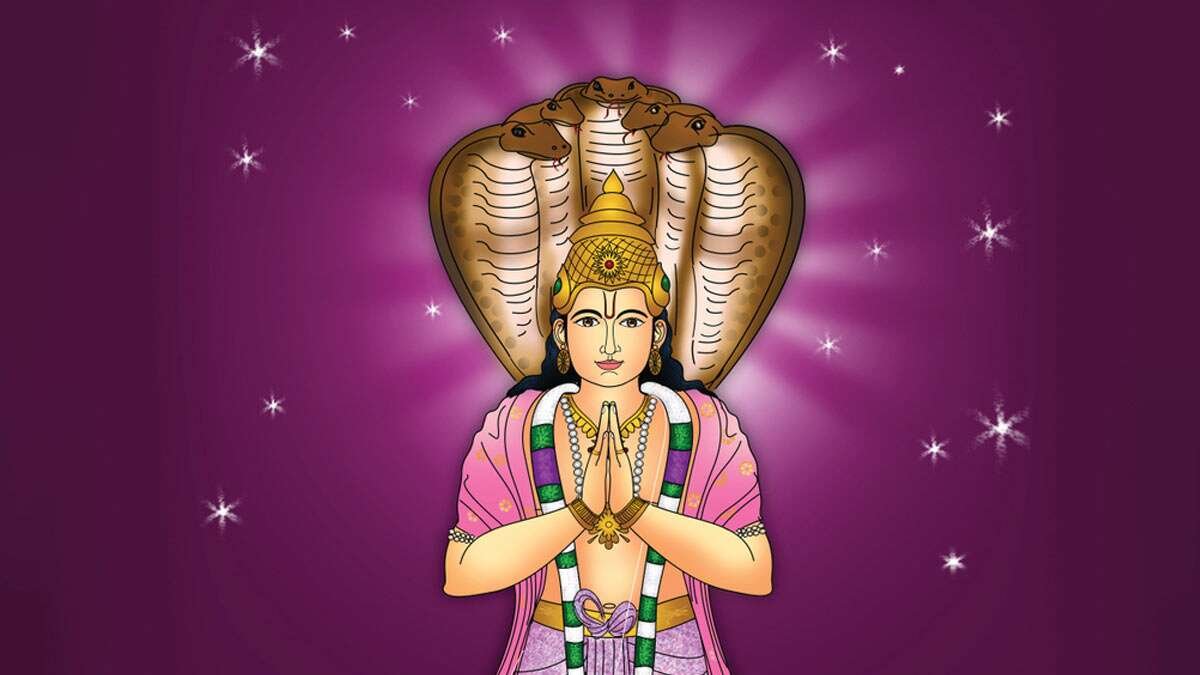Ketu is the ninth of the nine Navagrahas, or planets in Hindu astrology, and it is a lunar node on the southern side of the Moon (Chandra). Ketu’s presiding deity is Lord Ganesha. Ketu is a gloomy planet that does not exist in any physical form. Ketu always moves in the opposite direction. Ketu completes the zodiac circle in 18 years because it takes him approximately 1.5 years to travel through each sign.
Theology, monastic life, crime and punishment, hidden enemies and threats, and the occult are all ruled by ketu, according to vedic astrology. Ketu is also associated with mental illness, deep thinking, a desire for knowledge, shifting circumstances, spiritual development, comets, and cheating.
Black, grey, and smoky colors are associated with Ketu, according to Vedic astrology. The vaidooriyam, or cat’s eye, is Ketu’s gemstone. Ketu is given horse gram, seven different grains, rice, and horse gram mixed with rice.
Ketu and Rahu are, in mythology, Asura Swarnabhanu’s torso and head. Lord Vishnu decapitated Asura Swarnabhanu while distributing Amrita, the immortal potion that emerged from Samudra Mantham. Ketu is frequently depicted as a human or torso with a serpent’s tail and four hands holding a flag, shield, mace, and sword. However, in some images, he is depicted as a complete human being riding a vulture and holding weapons in his two hands.
Vedic astrology holds that if Ketu is in a favorable position, it can bestow wisdom, spiritual tendencies, asceticism, and a lack of attachment to material goals and desires. Ketu also gives its people psychic abilities and makes them experts at healing. However, if Ketu is weak, it can cause endless worries, blurry vision, and difficulty concentrating.
Ketu is praised as a cure-all in the sacred text Ketu Kavacham. The fervent chanting of the hymn is said to guarantee success in all endeavors.
There are numerous Ketu-themed temples. The Nagananthaswamy temple in Keezhaperumpallam in Tamilnadu is one of the most significant temples. Important treatment facilities for Sarpa dosha, or ailments related to the serpent, can be found at the Lord Srikalahasteeswara Temple in Andhra Pradesh and the Kukke Subramaniya Temple in Karnataka.
Two kilometers away from Poompuhar, in the village of Keelaperumpallam, is the Hindu temple known as the Naganatha Swamy Temple. Ketu, a shadow planet, is the god of the universe. However, Shiva or Naganatha Swamy is the temple’s most prominent idol. Two prakaram, or closed temple precincts, surround the flat rajagopuram of the temple.
From 6:00 a.m. to 8:30 p.m., the temple has four daily rituals and four annual festivals on its calendar. The main celebrations in the temple are Mahasivarathri, Margazhi Thiruvadirai, Panguni Uthiram, and Thirukartigai. The village is only mentioned in passing in the Tamil Saiva canonical work Tevaram, which was written in the 7th century and is categorized as a Vaippu Sthalam. It was written by Tamil saint poets known as the Nayanars.
According to Hindu myth, the Ocean of Milk was churned in order to obtain Amrita, the nectar of immortality. The devas and asuras follow Vishnu’s advice and stir the primordial ocean to acquire Amrita, which will grant them immortality. They used the Serpent Vasuki as their churning string to churn the ocean. They used Mount Mandara, which was mounted on the back of a Great Tortoise, the Kurma Avatar of Vishnu, as a churning pole. The terrible poison Halahala emerged from the sea’s depths and began to choke the entire universe as the gods and demons stirred it. The devas sought help from Shiva, who drank the poison to eliminate it. Vasuki was extremely upset that her error led to the problem. To atone for her transgressions, she prayed to Shiva. Shiva appeared as Naganathar in this location because he was pleased with her devotion.
During festivals and every day, the pooja (rituals) are carried out by temple priests. The Shaivaite community, a Brahmin subcaste, employs priests, as do other Shiva temples in Tamil Nadu. Six times a day, the temple rituals are performed; Each ritual begins at 5:30 a.m. with Ushathkalam, Kalasanthi at 8:00 a.m., Uchikalam at 10:00 a.m., Sayarakshai at 6:00 p.m., Irandamkalam at 8:00 p.m., and Ardha Jamam at 10:00 p.m. for Naganathaswamy, there were abhisheka (a sacred bath), alangaram (decoration), neivethanam (a food offering), and deepa aradanai (the waving of lamps). The worship is performed amid nagaswaram (a pipe instrument) and tavil (a percussion instrument) music, the reading of Vedic scriptures by priests, and worshipers prostrating in front of the temple mast. There are weekly practices like somavaram and sukravaram, fortnightly practices like pradosham, and monthly celebrations like amavasai (the day of the new moon), kiruthigai, pournami (the day of the full moon), and sathurthi. The major festivals observed in the temple are Mahasivarathri, Margazhi Thiruvadirai, Panguni Uthiram, and Vasuki Utsavam during Panguni. The temple is known for giving rice to infants for the first time. During planetary transition, the temple celebrates Rahu-Ketu transition every 2.5 years.
The temple is in the village of Keelaperumpallam, which is on the Thanjavur-to-Poompuhar road and is 2 km (1.2 mi) from Poompuhar and 93 km (58 mi) from Thanjavur. The temple’s closed precincts are surrounded by a single prakaram and a newly constructed flat rajagopuram. The Appar verses revere the location, but since the deity is not mentioned, it is not considered Padal petra stalam.

